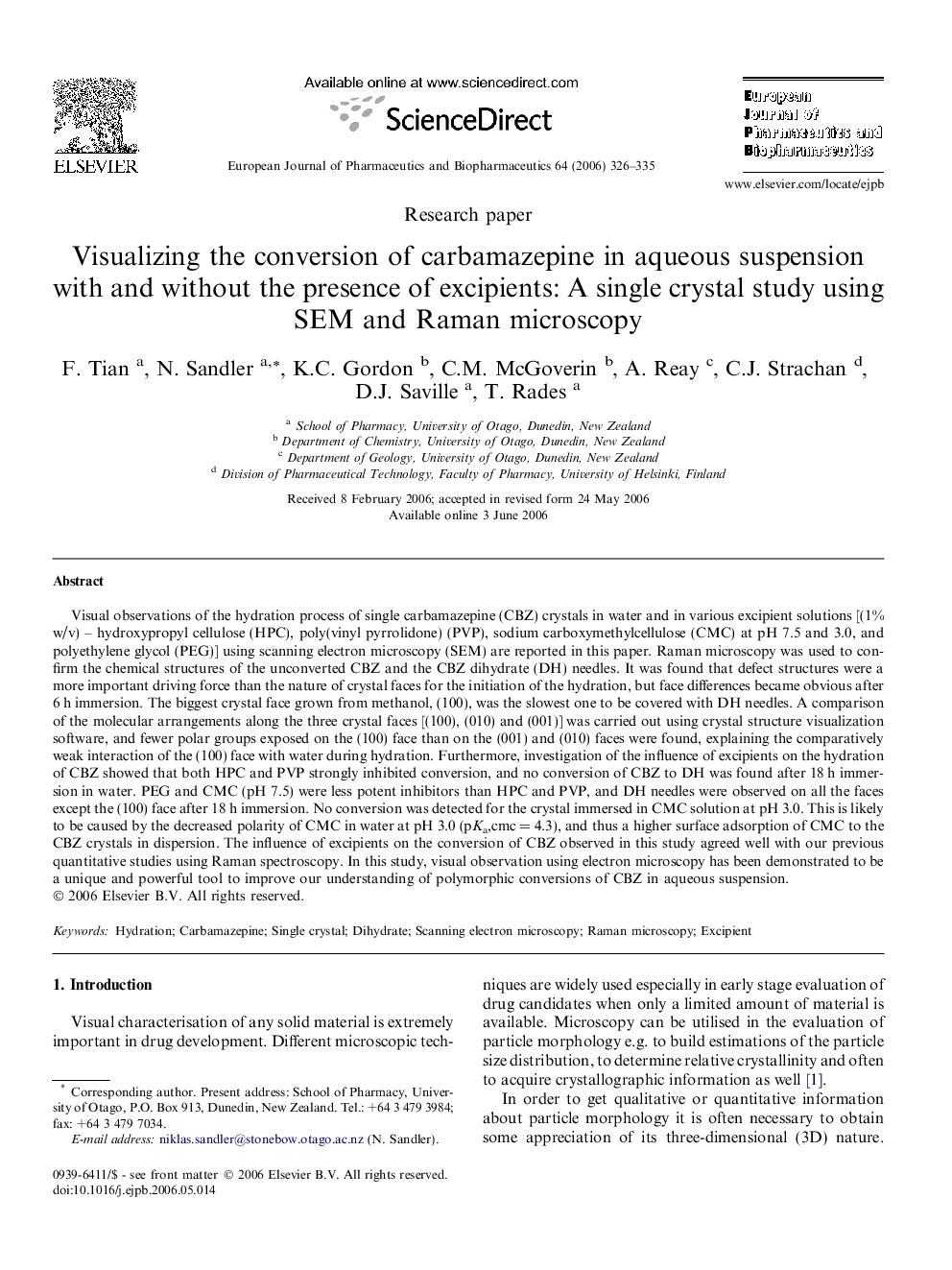| کد مقاله | کد نشریه | سال انتشار | مقاله انگلیسی | نسخه تمام متن |
|---|---|---|---|---|
| 2084983 | 1545410 | 2006 | 10 صفحه PDF | دانلود رایگان |

Visual observations of the hydration process of single carbamazepine (CBZ) crystals in water and in various excipient solutions [(1% w/v) – hydroxypropyl cellulose (HPC), poly(vinyl pyrrolidone) (PVP), sodium carboxymethylcellulose (CMC) at pH 7.5 and 3.0, and polyethylene glycol (PEG)] using scanning electron microscopy (SEM) are reported in this paper. Raman microscopy was used to confirm the chemical structures of the unconverted CBZ and the CBZ dihydrate (DH) needles. It was found that defect structures were a more important driving force than the nature of crystal faces for the initiation of the hydration, but face differences became obvious after 6 h immersion. The biggest crystal face grown from methanol, (100), was the slowest one to be covered with DH needles. A comparison of the molecular arrangements along the three crystal faces [(100), (010) and (001)] was carried out using crystal structure visualization software, and fewer polar groups exposed on the (100) face than on the (001) and (010) faces were found, explaining the comparatively weak interaction of the (100) face with water during hydration. Furthermore, investigation of the influence of excipients on the hydration of CBZ showed that both HPC and PVP strongly inhibited conversion, and no conversion of CBZ to DH was found after 18 h immersion in water. PEG and CMC (pH 7.5) were less potent inhibitors than HPC and PVP, and DH needles were observed on all the faces except the (100) face after 18 h immersion. No conversion was detected for the crystal immersed in CMC solution at pH 3.0. This is likely to be caused by the decreased polarity of CMC in water at pH 3.0 (pKa,cmc = 4.3), and thus a higher surface adsorption of CMC to the CBZ crystals in dispersion. The influence of excipients on the conversion of CBZ observed in this study agreed well with our previous quantitative studies using Raman spectroscopy. In this study, visual observation using electron microscopy has been demonstrated to be a unique and powerful tool to improve our understanding of polymorphic conversions of CBZ in aqueous suspension.
Journal: European Journal of Pharmaceutics and Biopharmaceutics - Volume 64, Issue 3, November 2006, Pages 326–335